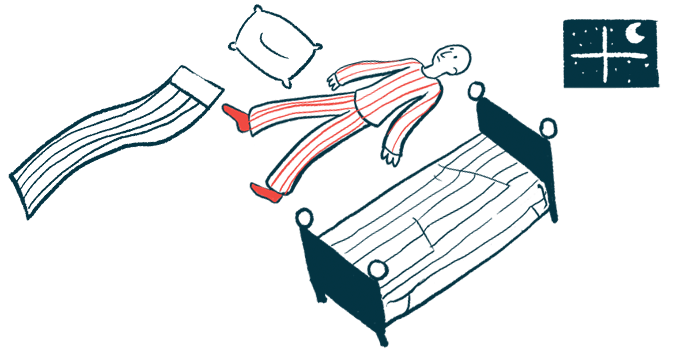Working on the night shift tied to higher risk of COPD in study
Long-term work at this time appears more risky than occasional late hours
Written by |

Permanent night shift work is associated with a nearly 50% higher risk of developing chronic obstructive pulmonary disease (COPD) relative to day work, according to a large study of U.K. data.
The risk of COPD was even higher among permanent night shift workers with high genetic susceptibility to the chronic lung disease, who had a 90% higher risk compared with day workers with low genetic risk.
These findings suggest that night shift work may be a risk factor for COPD and that “decreasing the frequency and duration of night shifts may offer a promising approach to mitigating respiratory disease incidence in night shift workers, particularly in light of individual susceptibility,” the researchers wrote.
The study, “Associations between long-term night shift work and incidence of chronic obstructive pulmonary disease: a prospective cohort study of 277,059 UK Biobank participants,” was published in BMC Medicine.
COPD is a chronic inflammatory disease characterized by the blockage of airflow, causing symptoms that make breathing difficult, including cough with mucus, wheezing, and shortness of breath.
Although smoking tobacco is considered the leading cause of COPD, recent evidence indicates that about half of the disease cases are linked to other risk factors, including genetic susceptibility or air pollution exposure.
The changes in circadian rhythm — the physical and behavioral variations that organisms experience over a 24-hour cycle — that come with working night shifts have been associated with a higher risk of developing certain conditions, such as cardiovascular diseases or infections.
“However, the relationships between long-term exposure to night shift work and COPD risk have not yet been addressed to date,” the researchers wrote. Further, no study to date has addressed the interaction between genetic susceptibility and night shifts on COPD incidence.
The study and its results
To know more, a team led by scientists in China analyzed data from 277,059 people who were in paid employment or self-employed and who didn’t have COPD when they were included in the U.K. Biobank.
The Biobank is a large-scale biomedical database study containing genetic, lifestyle, and health information, as well as biological samples from half a million U.K. participants. It is globally accessible to researchers undertaking health-related research in the public interest.
Most of the included participants worked during the day (82.8%) while 13.4% worked in shifts, but did so rarely or occasionally at night. Another 3.8% were on usual or permanent night shifts.
Regular night shift workers were significantly more likely to be men, younger, and smokers than day workers, and they slept less and had a higher body mass index (BMI), a ratio of height and weight.
During a median of nearly 13 years of follow-up, 6,558 people were diagnosed with COPD.
After adjusting analyses for potential influencing factors, including age, sex, ethnicity, BMI, smoking, alcohol consumption, and chronotype (the natural preferences for wakefulness and sleep), the team found that permanent night shift workers had a significantly higher risk of COPD.
Specifically, the risk of developing COPD was 28% higher in shift workers who rarely or sometimes undertook night shifts and 49% higher in those with regular night shift work, both compared with day workers.
Moreover, the risk of COPD was elevated with increasing exposure to night shift work. Those working on night shifts for up to 10 years had a 17% higher risk, while those working night shifts for 10 years or more had a 23% higher risk. People working more than eight shifts per month also had a significantly increased risk of COPD, by 41%.
These data highlight that either longer duration or higher frequency of night shifts are associated with a higher COPD risk.
Among included participants, up to 222,909 European people had also genetic data that were used to evaluate the possible connection between a genetic risk score and COPD risk. The genetic risk score was based on the assessment of 22 gene variants known to be associated with COPD.
The researchers first found that the higher the genetic risk score, the higher the COPD risk. In addition, there was an additive interaction between genetic susceptibility and night shift frequency on COPD risk.
Compared with day workers with low genetic risk, people working permanent night shifts and with a high genetic risk had the highest risk of COPD, by 90%. The risk of developing COPD was about 50% higher for both permanent night shift workers with low genetic risk and those with high genetic risk and irregular night shifts.
“These results support public health efforts to emphasize the harmful impact of night shift work, especially for those individuals who are at high genetic risk,” the researchers wrote.
Among the study’s limitations was its observational nature, which does not allow the determination of a cause-effect relationship between night shifts and COPD. Also, the majority of participants being white limits the generalizability of results to other ethnic and racial groups, they added.





